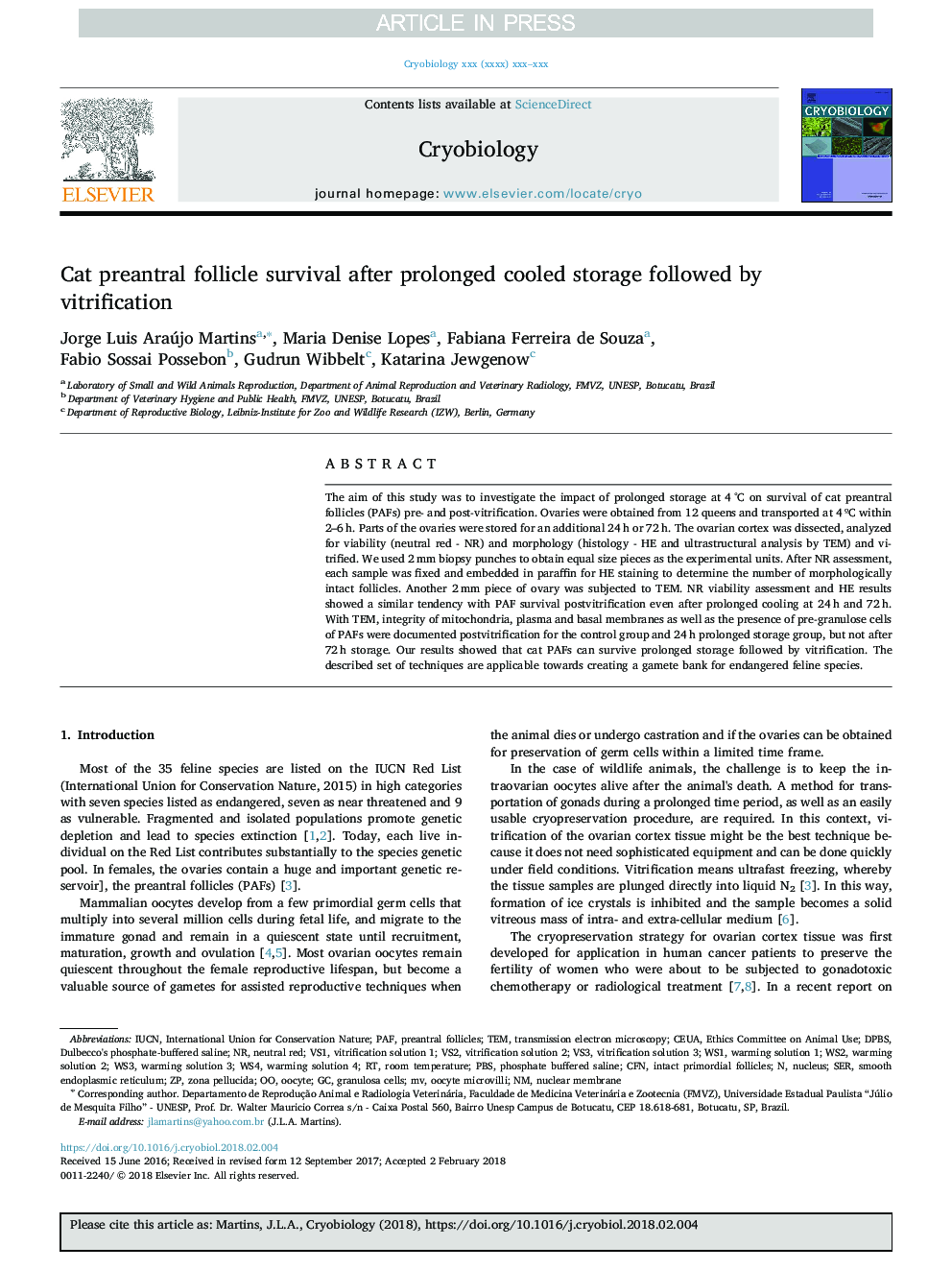| Article ID | Journal | Published Year | Pages | File Type |
|---|---|---|---|---|
| 8464134 | Cryobiology | 2018 | 7 Pages |
Abstract
The aim of this study was to investigate the impact of prolonged storage at 4â¯Â°C on survival of cat preantral follicles (PAFs) pre- and post-vitrification. Ovaries were obtained from 12 queens and transported at 4â¯ÂºC within 2-6â¯h. Parts of the ovaries were stored for an additional 24â¯h or 72â¯h. The ovarian cortex was dissected, analyzed for viability (neutral red - NR) and morphology (histology - HE and ultrastructural analysis by TEM) and vitrified. We used 2â¯mm biopsy punches to obtain equal size pieces as the experimental units. After NR assessment, each sample was fixed and embedded in paraffin for HE staining to determine the number of morphologically intact follicles. Another 2â¯mm piece of ovary was subjected to TEM. NR viability assessment and HE results showed a similar tendency with PAF survival postvitrification even after prolonged cooling at 24â¯h and 72â¯h. With TEM, integrity of mitochondria, plasma and basal membranes as well as the presence of pre-granulose cells of PAFs were documented postvitrification for the control group and 24â¯h prolonged storage group, but not after 72â¯h storage. Our results showed that cat PAFs can survive prolonged storage followed by vitrification. The described set of techniques are applicable towards creating a gamete bank for endangered feline species.
Keywords
Related Topics
Life Sciences
Agricultural and Biological Sciences
Agricultural and Biological Sciences (General)
Authors
Jorge Luis Araújo Martins, Maria Denise Lopes, Fabiana Ferreira de Souza, Fabio Sossai Possebon, Gudrun Wibbelt, Katarina Jewgenow,
